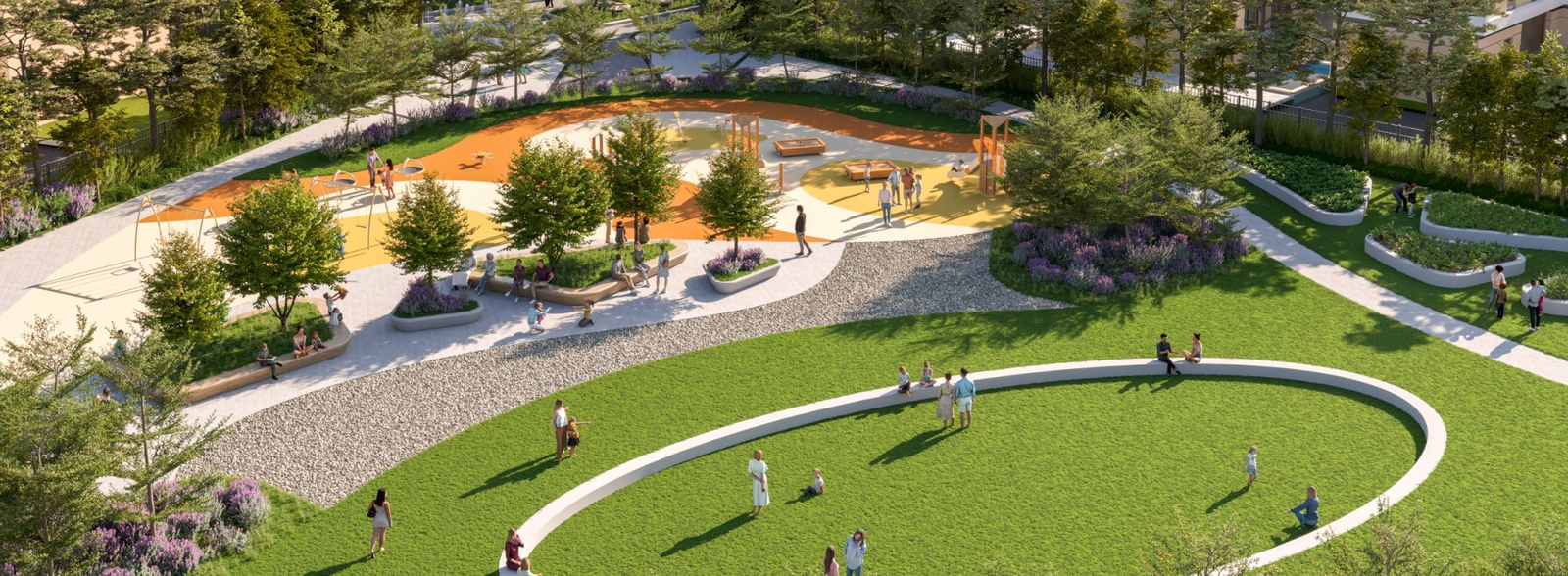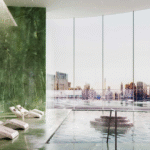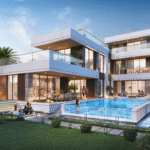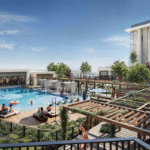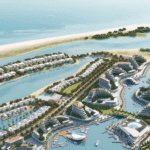Now Reading: Rising Demand for Ultra-Private Coastal Villas in Dubai
-
01
Rising Demand for Ultra-Private Coastal Villas in Dubai
Rising Demand for Ultra-Private Coastal Villas in Dubai
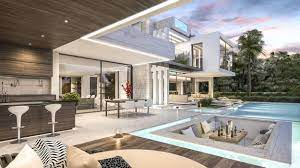
Table of Contents
Imagine waking to the gentle sound of waves, stepping onto your private beach with no neighbors in sight, or hosting a quiet dinner on a terrace framed by the Arabian Gulf’s turquoise expanse. In 2025, Dubai’s ultra-private coastal villas scattered across exclusive enclaves like Palm Jumeirah, Jumeirah Bay Island, and Marsa Al Arab are fueling a real estate surge, with 96,000 transactions worth $87 billion in the first half, 58% driven by buyers from the UK, India, Russia, and China.
Offering 100% freehold ownership, a dirham pegged to the U.S. dollar, and no personal income tax, capital gains tax, or annual property taxes, these villas promise 6-8% rental yields and 10-15% price appreciation, outpacing London (2-4%) and New York (2-3%). Properties over $545,000 qualify for a 10-year Golden Visa, while smaller units grant 2-year residency.
Fueled by 25 million tourists and a 4% population surge, these villas combine secluded waterfronts, bespoke design, and smart technology to deliver a lifestyle of unmatched privacy and luxury. Navigating fees, VAT, and 2025 regulations is key to securing your secluded coastal retreat.
Why Ultra-Private Villas Are in High Demand
Located in exclusive areas like Palm Jumeirah’s Fronds, Jumeirah Bay Island, and Marsa Al Arab, 20-45 minutes from Dubai International Airport via Sheikh Zayed Road or private water taxis, these villas boast vacancy rates of 2-3%, compared to 7-10% globally. You keep 100% of rental income $120,000-$400,000 annually on $2 million-$8 million properties versus $66,000-$240,000 elsewhere after taxes.
Zero capital gains tax saves $40,000-$480,000 on $200,000-$2.4 million profits, and no property taxes save $20,000-$80,000 yearly, unlike London’s council tax (up to 2%) or New York’s property tax (1-2%). Residential purchases skip 5% VAT ($100,000-$400,000), and the Golden Visa adds residency prestige. With private beaches, gated compounds, and proximity to landmarks like Burj Al Arab, these villas deliver 10-15% price growth, driven by their scarcity and allure for privacy-seeking elites.
Living here feels like owning your own secluded coastal paradise.
No Personal Income Tax: Rentals That Build Wealth
These ultra-private villas impose no personal income tax, letting you keep every dirham, unlike the U.S. (up to 37%) or UK (up to 45%). A $2 million Palm Jumeirah villa yields $120,000-$160,000, saving $44,400-$72,000; an $8 million Marsa Al Arab villa yields $320,000-$400,000, saving $144,000-$180,000. Short-term rentals, driven by 25 million tourists visiting nearby Atlantis The Palm or Burj Al Arab, require a DTCM license ($408-$816), boosting yields by 10-15% ($12,000-$60,000).
Long-term leases, favored by high-net-worth residents craving seclusion, need Ejari registration ($54-$136) for stability. Non-compliance risks fines up to $13,612, so licensing is essential. Smart home systems, like AI-driven security and privacy-focused tech, enhance rental appeal, making these villas highly coveted.
Tax-free rentals feel like a steady stream of private prosperity.
Zero Capital Gains Tax: Profits That Soar
These villas offer zero capital gains tax, letting you keep 100% of sale profits. Selling a $2 million Jumeirah Bay villa for $2.4 million (20% appreciation) yields a $400,000 tax-free profit, saving $80,000-$112,000 versus London (20-28%) or New York (20-37%). An $8 million Marsa Al Arab villa sold for $10 million delivers a $2 million tax-free gain, saving $400,000-$560,000. With 10-15% price growth driven by limited supply and global demand for privacy, these villas outperform international markets. A 4% DLD fee ($80,000-$320,000), often split, applies, but tax-free profits make these villas wealth-building sanctuaries.
Keeping every dirham feels like a triumphant financial escape.
No Annual Property Taxes: Ownership That Feels Free
Unlike global markets, these villas have no annual property taxes, saving $20,000-$80,000 yearly on $2 million-$8 million properties compared to London’s council tax ($40,000-$160,000) or New York’s property tax (1-2%). Maintenance fees ($15,000-$30,000) cover private beaches, infinity pools, and gated security, aligning with global luxury standards. A 5% municipality fee on rentals ($6,000-$20,000) applies, reasonable for such secluded coastal locations. These low costs make ownership sustainable, supporting a lifestyle that feels tranquil and exclusive.
No property taxes feel like a warm embrace for your investment.
VAT Rules: A Savvy Investor’s Advantage
Residential purchases skip 5% VAT, saving $100,000-$400,000 on $2 million-$8 million villas, unlike commercial properties or the UK’s stamp duty (up to 12%, or $240,000-$960,000). Off-plan purchases, common in Marsa Al Arab, incur 5% VAT on developer fees ($20,000-$100,000), recoverable via Federal Tax Authority (FTA) registration ($500-$1,000).
Short-term rental operators must register for VAT if revenue exceeds $102,041, charging 5% but claiming credits on DTCM fees ($408-$816). A $2 million villa yielding $120,000-$160,000 incurs $6,000-$8,000 in VAT, with $1,000-$2,000 in credits; an $8 million villa yielding $320,000-$400,000 incurs $16,000-$20,000 in VAT, with $3,000-$4,000 in credits. Non-compliance risks fines up to $13,612, so meticulous records are crucial.
VAT exemptions feel like a clever boost to your savings.
DLD Fees and Title Deeds: Securing Your Private Retreat
The 4% DLD fee, typically split, applies: $80,000 for a $2 million villa or $320,000 for an $8 million villa. Gift transfers to family or shareholders reduce DLD to 0.125%, saving $77,500-$310,000. For instance, gifting an $8 million villa slashes DLD from $320,000 to $10,000. Title deed issuance costs $136-$272, requiring DLD registration. Broker fees, typically 2% ($40,000-$160,000), may be waived for off-plan projects like Marsa Al Arab. Mortgage registration (0.25% of the loan, or $5,000-$20,000) and valuation fees ($680-$1,360) apply for financed deals. The 2025 Oqood system ensures escrow compliance for off-plan purchases, protecting your investment in these ultra-private villas.
Title deeds feel like the key to your secluded sanctuary.
Corporate Tax: A Business Buyer’s Note
Introduced in 2023, the 9% corporate tax applies to businesses with profits over $102,110. A company leasing a $2 million villa yielding $120,000-$160,000 faces a 9% tax ($10,800-$14,400), reducing net income to $109,200-$145,600. An $8 million villa yielding $320,000-$400,000 incurs $28,800-$36,000 in tax. Qualified Free Zone Person (QFZP) status in areas like Dubai Multi Commodities Centre (DMCC) avoids this, saving $10,800-$36,000, with setup costs of $2,000-$5,000. Small business relief waives corporate tax for revenues under $816,000 until December 31, 2026. Individual ownership skips this tax, ideal for most buyers seeking ultra-private living.
Corporate tax feels like a gentle wave you can navigate.
New Tax Rules for 2025
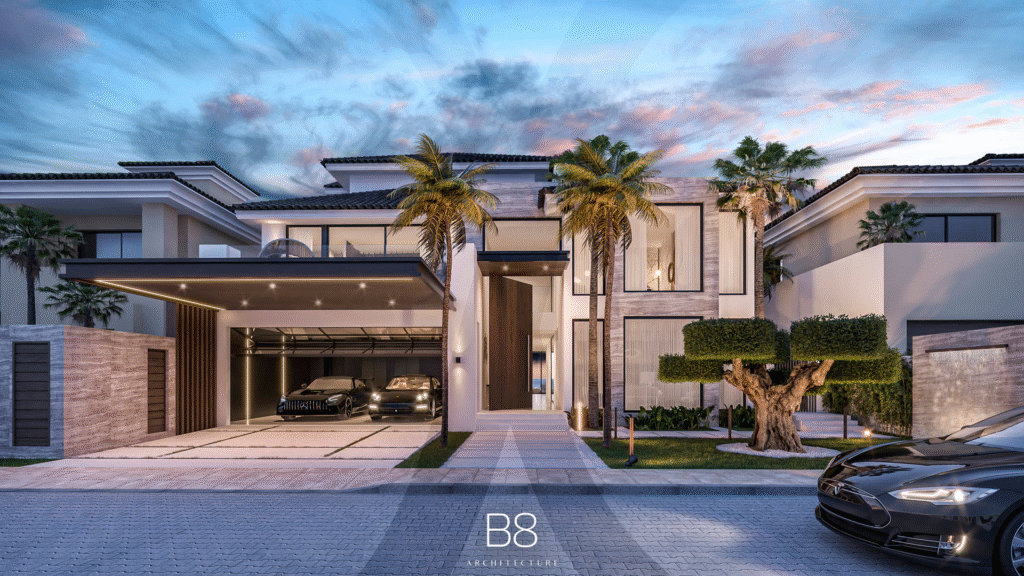
The Domestic Minimum Top-up Tax (DMTT), effective January 1, 2025, imposes a 15% tax on multinationals with revenues over €750 million ($793 million). Individual investors and smaller entities are unaffected, and QFZP status avoids DMTT, saving $10,800-$36,000. Cabinet Decision No. 34 refines Qualifying Investment Fund (QIF) rules, exempting corporate tax if real estate income is below 10%. A QIF earning $1 million, with $100,000 from rentals, faces 9% tax ($8,100) on 90% ($900,000). A July 2025 policy allows corporate tax deductions on fair market value depreciation, saving $3,600-$14,400 annually for a $2 million villa revalued at $2.5 million.
New rules feel like a puzzle with prosperous solutions.
Top Ultra-Private Coastal Villas in Dubai
1. Palm Jumeirah: Signature Frond Villas
Signature Frond Villas ($2 million-$5 million) offer 6-8% yields and 10-12% price growth, featuring private beaches and gated compounds. A $2 million villa yields $120,000-$160,000 tax-free, saving $44,400-$72,000. Selling for $2.4 million yields a $400,000 tax-free profit, saving $80,000-$112,000. No property taxes save $20,000-$50,000, and VAT exemption saves $100,000. Maintenance fees are $15,000-$25,000, with a 5% municipality fee ($6,000-$8,000). QFZP saves $10,800-$36,000. U.S. investors deduct depreciation ($36,364-$90,909), saving up to $31,818. Their secluded design near Atlantis The Palm draws privacy-seeking elites.
Signature Frond Villas feel like a tranquil coastal retreat.
2. Jumeirah Bay Island: Bulgari Marina Villas
Bulgari Marina Villas ($3 million-$6 million) offer 6-8% yields and 10-12% price growth, featuring private jetties and Bulgari’s signature design. A $3 million villa yields $180,000-$240,000 tax-free, saving $66,600-$108,000. Selling for $3.6 million yields a $600,000 tax-free profit, saving $120,000-$168,000. No property taxes save $30,000-$60,000, and VAT exemption saves $150,000. Maintenance fees are $18,000-$25,000, with a 5% municipality fee ($9,000-$12,000). QFZP saves $10,800-$36,000. U.S. investors deduct depreciation ($54,545-$109,091), saving up to $38,182. Their exclusive elegance attracts ultra-high-net-worth buyers.
Bulgari Marina Villas feel like a serene coastal masterpiece.
3. Marsa Al Arab: Quay Wall Villas
Quay Wall Villas ($4 million-$8 million) offer 6-8% yields and 10-15% price growth, featuring private yacht docks and 360-degree Gulf views. A $4 million villa yields $240,000-$320,000 tax-free, saving $88,800-$144,000. Selling for $4.8 million yields an $800,000 tax-free profit, saving $160,000-$224,000. No property taxes save $40,000-$80,000, and VAT exemption saves $200,000. Maintenance fees are $20,000-$30,000, with a 5% municipality fee ($12,000-$16,000). QFZP saves $21,600-$36,000. U.S. investors deduct depreciation ($72,727-$145,455), saving up to $50,909. Designed by Shaun Killa, their superyacht-inspired design captivates global elites.
Quay Wall Villas feel like a majestic coastal haven.
Why Ultra-Private Villas Are in Demand
Price Range: Signature Frond Villas ($2 million-$5 million) suit high-end buyers; Bulgari Marina Villas ($3 million-$6 million) and Quay Wall Villas ($4 million-$8 million) target ultra-elite investors.
Rental Yields: 6-8%, with short-term rentals at 6-8% for tourist demand; long-term leases at 6-7% for stability.
Price Appreciation: 10-15%, driven by scarcity and privacy appeal.
Lifestyle: Private beaches, gated compounds, and smart tech create secluded living.
Amenities: Yacht docks, infinity pools, and concierge services enhance exclusivity.
ROI Verdict: 10-12% ROI, blending privacy with stellar returns.
Living here feels like embracing a radiant, secluded legacy.
Strategies to Maximize Returns
For individuals: Hold properties personally to avoid corporate taxes, saving $10,800-$36,000. Negotiate DLD fee splits, saving $40,000-$160,000. Use gift transfers to reduce DLD to 0.125%, saving $77,500-$310,000. Recover 5% VAT on developer fees via FTA registration ($500-$1,000). Leverage double taxation treaties with 130+ countries, saving $44,400-$180,000. U.S. investors deduct depreciation ($36,364-$145,455), saving up to $50,909.
For corporates: Secure QFZP status, keep QIF income below 10%, and claim depreciation deductions. Hire property managers ($15,000-$30,000 annually) and tax professionals ($1,000-$3,000) to avoid fines up to $136,125. Focus on short-term rentals in Palm Jumeirah, long-term in Marsa Al Arab.
These strategies feel like a roadmap to your private wealth.
Risks to Watch in 2025
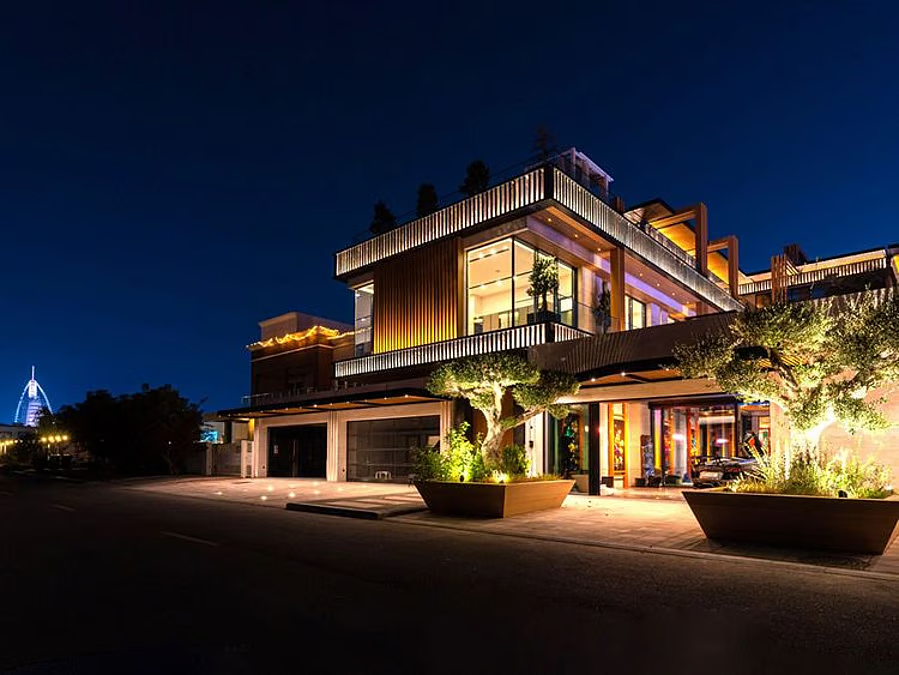
A projected oversupply of 182,000 units by 2026 may slightly slow price growth in newer areas, but Palm Jumeirah and Marsa Al Arab remain resilient due to their exclusivity. Off-plan delays risk setbacks, so choose trusted developers like Nakheel or Dubai Holding and verify escrow compliance via the 2025 Oqood system. Non-compliance with VAT or DTCM rules risks fines up to $13,612, and corporate tax errors can cost $136,125. Indian investors must report properties in India’s Foreign Asset schedule to avoid $135,000 penalties. Currency fluctuations, like a 5% dirham shift, could impact returns.
Why Ultra-Private Villas Are Worth It
From Palm Jumeirah’s tranquil retreats to Marsa Al Arab’s majestic havens, these ultra-private coastal villas offer 10-12% ROI, 10-15% growth, and tax-free savings of $20,000-$560,000 annually. With Golden Visa perks, 80-85% rental occupancy, and a lifestyle of secluded luxury, they’re driving Dubai’s property market in 2025. Navigate fees, secure your coastal sanctuary, and invest in Dubai’s radiant future.
read more: Prosper Boldly: Wellness Residences Ignite Healthy Lifestyle Dreams



